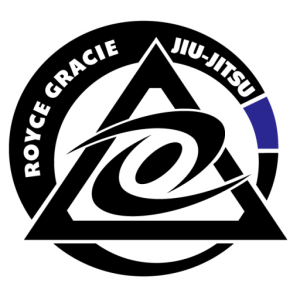
Judo, which means “the gentle way” in Japanese, is both a martial art and an Olympic sport that emphasizes skill, technique, and strategy over brute strength. Developed in Japan by Jigoro Kano in the late 19th century, Judo teaches how to use an opponent’s force against them through throws, pins, and submissions. Beyond its physical practice, Judo is a philosophy — a way to develop character, discipline, and respect.
Judo was founded in 1882 by Professor Jigoro Kano, who studied various traditional jujutsu schools and combined their most effective techniques into a safer and more educational system.
Kano opened his first dojo, the Kodokan, in Tokyo, where he introduced Judo not only as a method of self-defense but also as a means to promote physical fitness, moral values, and personal growth.
He based his art on two main principles:
Maximum Efficiency: Use the least amount of energy for the greatest result.
Mutual Welfare and Benefit: Progress and harmony are achieved when we help each other grow.
At its core, Judo is more than a sport — it’s a way of life. Developed by Dr. Jigoro Kano, Judo teaches values that extend far beyond the mat. Every throw, every bow, and every moment of practice is designed to build character, discipline, and mutual respect.
Two Guiding Principles Define Judo:
This principle teaches students to use their mind and body intelligently. Instead of relying on strength alone, Judokas learn to use timing, leverage, and balance to overcome challenges. It’s a lesson that applies not just in Judo, but in school, relationships, and everyday life — to work smarter, not harder.
Judo emphasizes cooperation over competition. Students help each other improve, creating a community where everyone’s progress matters. Kids learn empathy, teamwork, and the importance of lifting others up while pursuing their own goals.
Judo offers a complete path for physical fitness, mental clarity, and personal growth. Whether practiced as a sport, a self-defense method, or a lifestyle, it builds strength, coordination, humility, and confidence.
Judo was designed as a system of education, not violence. Kano envisioned it as a way to develop better citizens through discipline, humility, and cooperation.
Through practice, students learn:
for instructors, training partners, and opponents.
staying calm under pressure.
built through physical and mental challenge.
Because of these values, Judo is taught in schools and community programs around the world as a tool for youth development.
Judo is often described as a way to train both the body and the mind. Practitioners, known as judoka, learn balance, timing, and control through practice drills, throws (nage-waza), and groundwork (ne-waza).
A typical Judo session includes:
Unlike striking arts, Judo emphasizes grappling, leverage, and technique, teaching students how to neutralize opponents regardless of size or strength.
Judo became an official Olympic sport in 1964 during the Tokyo Games — the first Asian martial art to achieve that recognition.
Today, Judo is practiced by millions worldwide, promoting sportsmanship and cultural exchange. Athletes compete under strict rules, earning points through clean throws, holds, and submissions.
An “ippon” — a perfect throw or successful pin/submission — ends the match immediately.
A Safe, Fun, and Structured Learning Experience
A typical judo class for kids includes:

To improve flexibility and prevent injuries.

Teaching safe landing techniques.

Partner drills on throws, pins, and holds.

Fun sessions that reinforce learning.
For children who enjoy challenges, Judo provides a safe and structured way to test their skills. Local, regional, and national tournaments allow young Judokas to apply what they’ve learned in a supportive environment surrounded by peers who share their passion.
Competition in Judo is never about aggression or dominance — it’s about discipline, respect, and continuous self-improvement. Every match becomes a lesson in focus, patience, and resilience.
Participation is entirely optional. Many children choose to practice Judo simply for fun, fitness, and personal growth. But for those who do compete, each experience — win or lose — builds confidence, sportsmanship, and a deeper understanding of teamwork and perseverance.
Judo uses a colored belt system starting from white and advancing through yellow, orange, green, blue, brown, and finally black. Each color represents a new stage of learning, marking both technical improvement and personal growth.
Belt promotions are earned through consistent practice, respect, and understanding of techniques — not just physical ability. This clear, goal-oriented system keeps children motivated and gives them a sense of achievement with every step forward.
As kids move through the ranks, they learn that success in Judo — like in life — comes from patience, perseverance, and continuous effort.
Judo and Brazilian Jiu-Jitsu (BJJ) share the same origin — both evolved from traditional Japanese Jujutsu — but their focus differs. Judo emphasizes throws, pins, and takedowns to bring an opponent to the ground, while BJJ centers on ground fighting and submissions.
In Judo, the goal is efficiency and control through clean throws and leverage. In Jiu-Jitsu, the focus shifts to techniques like chokes and joint locks once on the mat.
Both arts build discipline, respect, and self-defense skills, but Judo offers a faster pace with more emphasis on standing techniques — making it ideal for children and beginners who want a dynamic, full-body martial art.
Finding a good judo club is simple. Most communities have programs at recreation centers, martial arts schools, or judo clubs. Many offer trial classes so kids can try before they join.
All you need is a judo gi and a willingness to learn.
When choosing a program, look for certified instructors who have experience teaching children. Visit the dojo to see if it feels safe, positive, and welcoming.
Ask about class size and the school’s approach to competition. A great club will focus on each child’s growth, helping them progress confidently and at their own pace.

© 2025 · ROYCE GRACIE JIU JITSU ACADEMY OF RALEIGH